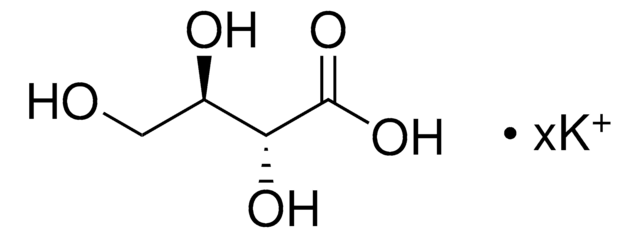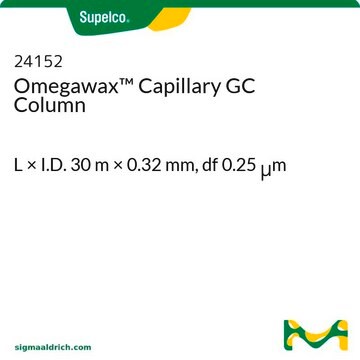24056
SP®-2560 Capillary GC Column
L × I.D. 100 m × 0.25 mm, df 0.20 μm
Synonym(s):
SP-2560, 100M.20UM.25MM
About This Item
Recommended Products
material
fused silica
Quality Level
Agency
AOAC® 2012.13,Ce 1-h05,996.06
meets requirements for USP G5
parameter
≤25-250 °C temperature (isothermal or programmed)
Beta value
313
df
0.20 μm
technique(s)
gas chromatography (GC): suitable
L × I.D.
100 m × 0.25 mm
matrix active group
Non-bonded; poly(biscyanopropyl siloxane) phase
application(s)
agriculture
clinical
food and beverages
column type
capillary highly polar
Looking for similar products? Visit Product Comparison Guide
Related Categories
General description
USP Code: This column meets USP G5 requirements.
Phase:
- Non-bonded
- Poly(biscyanopropyl siloxane)
- Subambient to 250 °C (isothermal or programmed)
Other Notes
Legal Information
Application
Choose from one of the most recent versions:
Already Own This Product?
Find documentation for the products that you have recently purchased in the Document Library.
Customers Also Viewed
Protocols
A protocol for GC Analysis of a 37-Component FAME Mix on SP™-2560.
GC Analysis of a 37-Component FAME Mix on SP™-2560, Slower Oven Ramp
Fast GC Analysis of Detailed cis/trans Fatty Acid Methyl Esters (FAMEs) on the 75 m SP™-2560 Capillary Column
FAME Standard for Optimizing GC System Performance
Chromatograms
suitable for GCsuitable for GCsuitable for GC, application for SPEsuitable for GCOur team of scientists has experience in all areas of research including Life Science, Material Science, Chemical Synthesis, Chromatography, Analytical and many others.
Contact Technical Service







